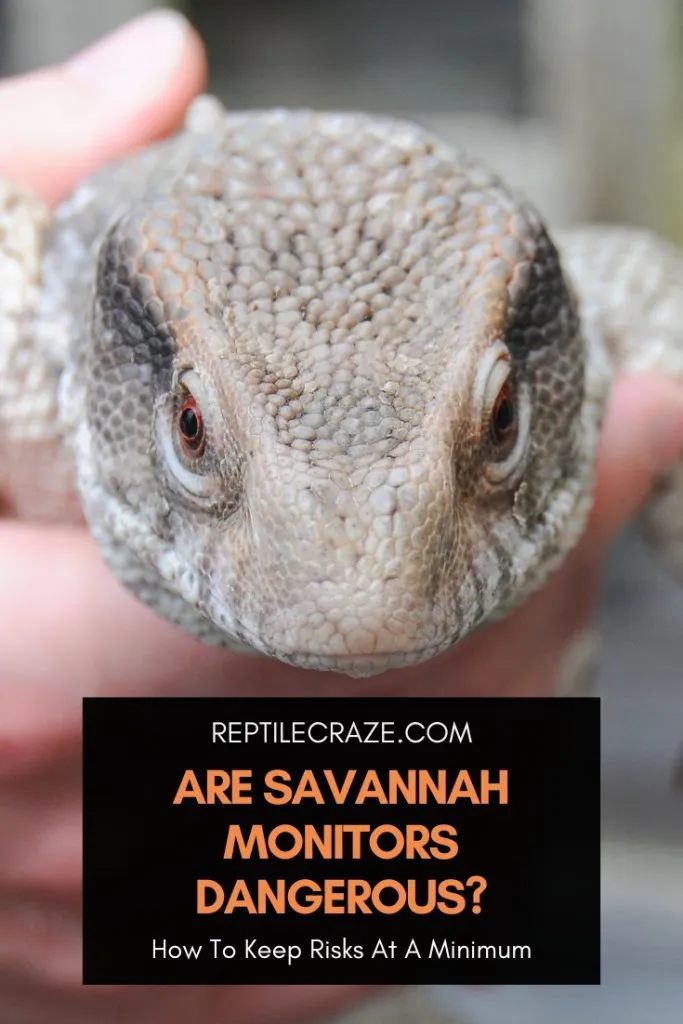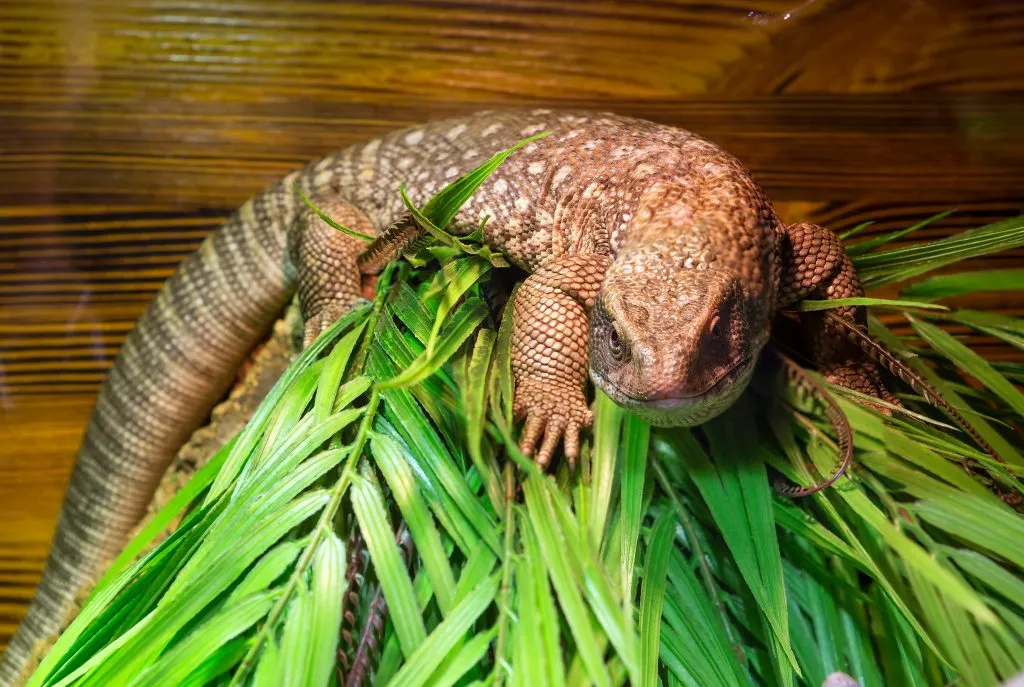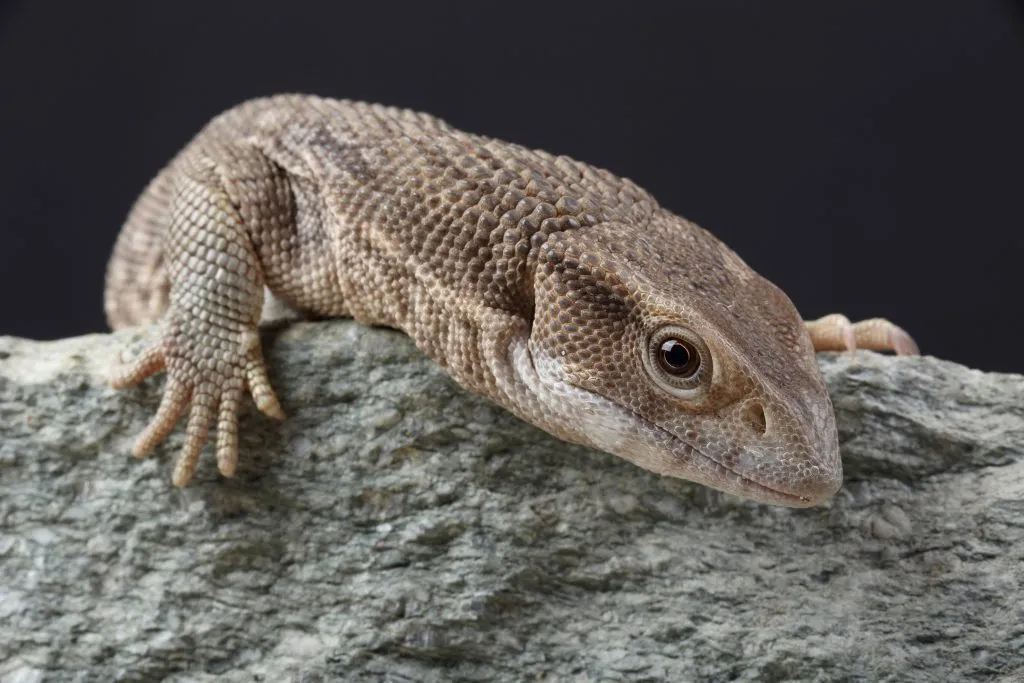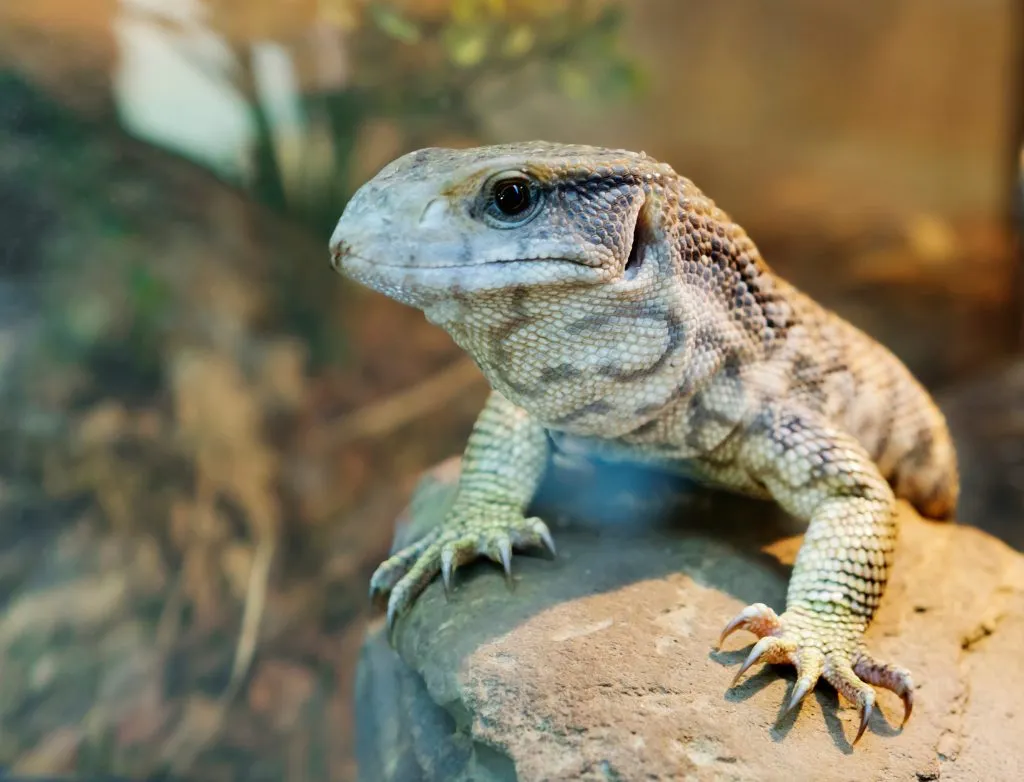
If you are considering getting a savannah monitor as a pet, you might have found out how big these guys are. Of course, this probably makes you wonder how dangerous these reptiles can be for you and your family when kept as pets.
Like most pets, savannah monitors can be dangerous as they carry bacteria. They also have a strong bite and can scratch with their claws. However, when they are properly cared for and handled, savannah monitors aren’t more dangerous than any other common pet.
Understanding these reptiles can help you avoid situations that put you or others in harms way. Let’s have a look at what might make Savannah monitors dangerous and how to safely manage them to ensure that your pet isn’t a hazard in your home.
Table of Contents
How A Savannah Monitor Can be Dangerous
Although they are not typically aggressive towards humans and can make great pets, Savannah monitors can be dangerous if not properly cared for or handled.
These reptiles have powerful jaws that can deliver a strong bite when provoked, as well as sharp claws and a strong tail that could cause serious injury if mishandled.
In addition to physical harm, monitors can also carry certain bacteria, which may transfer to people humans who come into contact with them.
Therefore, it is important to handle these animals responsibly and take the necessary precautions when caring for them to prevent any potential danger from occurring.
Are Savannah Monitor Bites Dangerous?
A Savannah monitor is generally not going to attack you unprovoked, but most monitors will bite defensively if they feel threatened.
Accidental bites also happen; an example of this is biting your hand or fingers during hand-feeding.
The bigger the monitor, the higher risk that it can do some serious damage. Bites from a small savannah monitor may leave only dents or small scratches, but bites from a full-grown monitor can be very painful and may even need medical attention.
When defensive biting, the monitor will lunge at the threat, bite, and hold on. A monitor bite is painful, as its teeth are sharp and designed for lacerating and crushing.
Experienced handlers will tell you not to pull away from the monitor’s grip when you do get bitten, as this can cause further damage to both of you. Admittedly, fighting the instinct to pull away is very difficult to do!
You can read more about Savannah monitor bites and what to do about them here.

Are Savannah Monitor Bites Venomous?
Savannah monitor bites can be painful but are these bites venomous? The answer is no – Savannah monitor bites are not venomous.
Savannah monitors differ from some other monitor lizards in this regard. While many monitor lizards do secrete a venom that they use to kill small prey, studies have shown that the Savannah monitor does not have the same ability.
While the bite itself may cause pain and even injury, it does not contain any toxic substances to harm you further.
Do Savannah Monitors Carry Dangerous Bacteria?
Savannah monitors often harbor bacteria that can be harmful to humans. This is true of most reptile species and many mammals as well.
Salmonella
The most common bacteria hazard carried by Savannah monitors is salmonella. Not only do monitors often carry the bacteria, but sometimes their
Salmonella is commonly found in the reptile digestive tract, including Savannah monitors. It usually causes no harm to the monitor but can cause serious illness in humans.
The salmonella bacteria are shed in the monitor’s feces (poop). People become infected after handling a monitor or cleaning its environment and then touching their mouth without washing their hands first.
Once the bacteria are swallowed, it infects that person’s digestive tract and causes salmonellosis disease. Salmonellosis can result in severe diarrhea, fever, and stomach cramps and may even require a hospital visit.
Pseudomonas
Pseudomonas bacteria are another problem. These bacteria like warm, wet environments and can grow in the monitor’s mouth.
While pseudomonas can be harmful to the Savannah monitor itself, causing health problems such as abscesses or mouth rot, it is also dangerous to people.
People most commonly get pseudomonas from their monitor through a bite. Bacteria from the monitor’s mouth enter through the person’s broken skin and cause an infection that way.
This may result in local infection (infected cut or abscess), or it may cause bigger problems such as septic arthritis or blood infections.

Other Bacteria
Of course, there are other bacteria carried by Savannah monitors, and reptiles in general, that are dangerous to humans. These include bacteria that are shed in the feces and bacteria that are found in the mouth.
Many of the bacteria-causing diseases in reptiles can be harmful to humans, given the right circumstances.
Always handle your Savannah monitor keeping this in mind, and seek veterinary care if your monitor has one of these conditions.
Other Ways Your Savannah Monitor Can Be Dangerous
Claws and tails! Never forget that your monitor has very sharp claws and a very strong tail, all of which are capable of causing some damage.
Savannah monitors have incredibly sharp claws and will use them if they feel threatened or are frightened. This can result in serious scratches to their handler if not careful.
Their tails are thick and long, designed to be a defensive weapon they will whip at a potential threat. A tail whip can result in nasty welts and lacerations.
Tip: Thinking about buying a savannah monitor? We show you the most reputable breeders here (some of them ship worldwide).
How To Keep Yourself Safe When Handling Your Monitor

Owning a Savannah monitor can be a pleasure. They are not particularly dangerous reptiles to own, but there are certain precautions that you should take to minimize potential risks to both of you.
Learn How To Handle Your Monitor Properly
One of the most common reasons for your Savannah monitor to lash out at you is that they feel threatened or unsafe. Learning to handle your monitor properly will help it to feel comfortable with you.
The best time to learn to handle your monitor and for it to become used to being handled is when it is young. You can read more about how to do this here.
Use Protective Equipment
Protective equipment can protect you from your monitor’s teeth, claws, and tail. Leather gloves can be useful when needed, or you may consider buying specialized these reptile-handling gloves.
Do Not Hand-feed Your Monitor
Hand-feed is the most common cause of bites. Avoiding this practice goes a long way to reducing injuries from biters.
Do Not Handle Your Savannah Monitor When It is Hungry
Savannah monitors are highly
Keep Your Savannah Monitor’s Home Clean
Keeping your monitor’s habitat, feed, and water dishes clean will help prevent the build-up of dangerous bacteria in its environment.
You and your pet are less likely to become ill from bacterial disease if everything is kept as clean as possible.
Wash Your Hands After Handling Your Savannah Monitor
Washing your hands thoroughly after handling your monitor will help make sure that bacteria like salmonella are not passed from your pet to you.
A Parting Word
Savannah monitors can make good pets for the right people; however, they can present some challenges.
They are not considered a good option for new reptile owners and should only be owned by those who already have some experience in the area.
That said, being aware of potential dangers and knowing how to prevent them is essential for any reptile owner, experienced or not.
Following the tips above can help reduce your risk of being injured by your Savannah monitor and will also help keep both you and your pet healthy.
- Enchi Ball Python: A Unique and Stunning Morph of Python regius - March 27, 2025
- Emerald Tree Monitor: The Enigmatic Green Guardian of the Rainforest - March 26, 2025
- The Egyptian Cobra (Naja haje): A Fascinating Serpent - March 25, 2025
